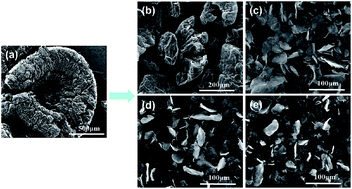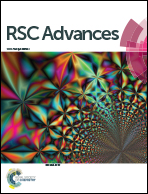Preparation of polyvinylidene fluoride/expanded graphite composites with enhanced thermal conductivity via ball milling treatment
Abstract
In recent decades, great efforts have been devoted to prepare materials with enhanced thermal conductivity due to the growing interest in thermal conductive materials. Herein, we illustrate a facile strategy to improve the thermal conductivity of polyvinylidene fluoride/expanded graphite (PVDF/EG) composites by pre-treatment of EG via ball milling. Before incorporating EG into PVDF via conventional melt processing, EG powders were treated by shear-force-dominated ball milling. In this way, the loose and porous vermicular structure of EG could be effectively destroyed and exfoliated to graphite nanosheets (GNSs). As a result, the PVDF/GNSs composites show improved thermal conductivity owing to their larger specific surface area. With the filler content fixed at 15 wt%, the thermal conductivity of treated PVDF/GNSs composites can reach 1.29 W m−1 K−1, 42.5% higher than that of PVDF/EG (0.90 W m−1 K−1). Moreover, the electromagnetic interference (EMI) shielding property and tensile strength of PVDF/CNSs composites are also remarkably improved. Our work proves to be a simple and easily industrialized method for EG treatment which has great potential for improving the thermal conductivity of polymer composites in lighting devices and electromagnetic shielding applications.


 Please wait while we load your content...
Please wait while we load your content...